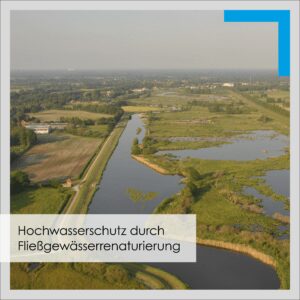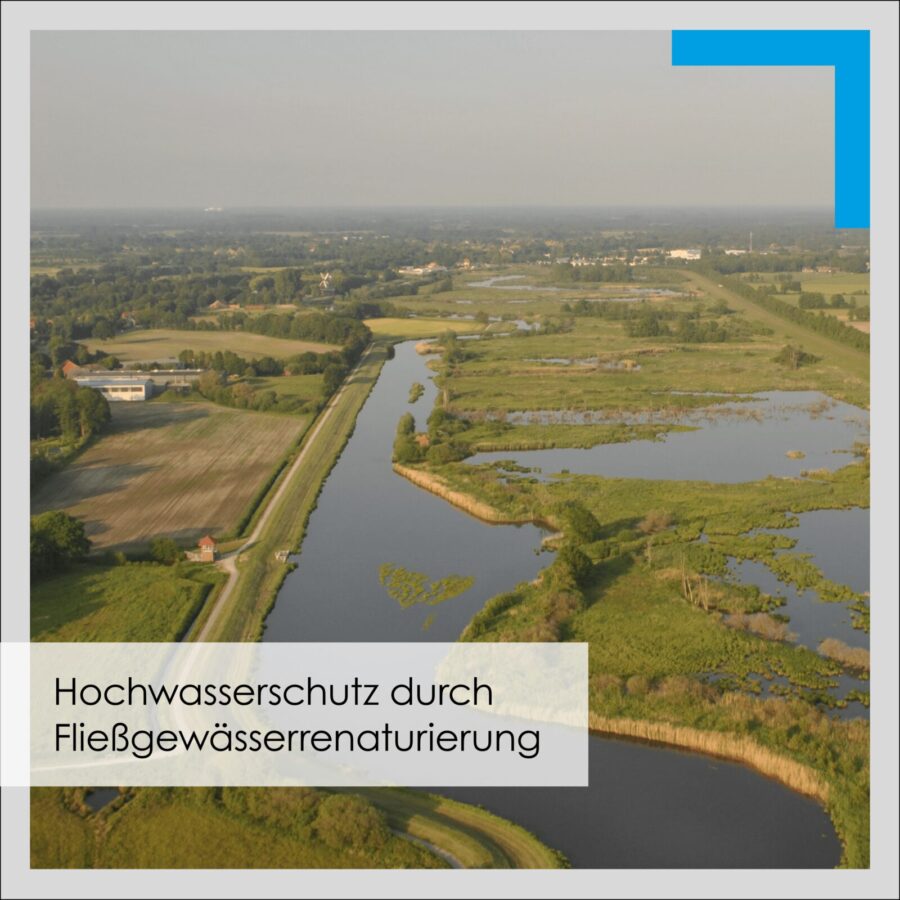
NEWS: Flood protection along watercourses has been a topic of general interest not only since the catastrophic floods in July this year. Since settlements are often built in the immediate vicinity of watercourses, measures against flooding have had to be taken for centuries. Up until the end of the 18th century, measures were mainly carried out selectively, without considering the effects of these measures elsewhere. But even after that, many measures were implemented that did not improve the overall situation, but at best shifted it. The most common solution was to expand the watercourse with a trapezoidal profile, remove the vegetation and straighten the course of the watercourse. The aim of these measures was to increase the flow velocity and thus allow the water to drain more quickly.
Even if one disregards the negative consequences for biodiversity, these measures have rather worsened the situation. The main problem is that today's watercourses have much less surface area at their disposal than they would naturally need. A lowland stream that is one metre wide today can be assumed to have naturally had a 9 to 30 metre wide corridor available for development and flooding. At the same time, many areas are sealed, especially in settlement areas. This means that less precipitation water can be stored in the soil and vegetation or evaporates slowly, but runs off quickly and is channelled into flowing waters.
If the water level rises as a result of continuous rainfall, heavy rainfall events or snowmelt, the watercourse cannot overflow its banks over a wide area to slowly release the water into the floodplain. Instead, the flow velocity increases and the water is transported downstream. If too much water is added to the watercourse or if the water is dammed up, especially by structures, the water masses quickly exceed the capacity of the flow cross-section. Severe flooding then occurs, especially at bottlenecks. Due to the greatly increased flow velocities compared to the natural state, the water has enormous forces at its disposal that can cause considerable damage.
The EU adopted the so-called Water Framework Directive as early as 2000. One of its goals is to reduce the effects of flooding. This is to be achieved by restoring watercourses to as close to their natural state as possible. This should already be achieved by 2015, but often the renaturation of flowing waters is not a priority. Therefore, in 2015 only 8.2 % of German surface waters were in a good, i.e. natural or near-natural, condition.
Various measures have already been implemented on watercourses that have experienced frequent floods in the past, which successfully reduce the impact of floods. The most important thing is to give the watercourse space that can be flooded. On the one hand, these areas increase the capacity of the watercourse. On the other hand, water is retained in the area, which means that water is stored in the soil and vegetation and is thus not directly discharged. One way to achieve this is to reduce or relocate dikes. Another important point is that the flow velocity in water bodies must be reduced again. This can be achieved by reconnecting old water loops or constructing new ones. In addition, natural watercourse profiles and natural vegetation should be developed again.
The MuP Group makes its contribution to a safe and natural future for our watercourses, particularly in the "Water Management" business area. Engineering for a better tomorrow!
Learn more about our work and projects and follow us: ![]()
![]()
![]()
![]()
#mullandpartner #engineeringforabettertomorrow #news #flood #river renaturation

